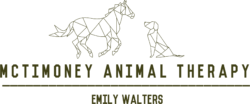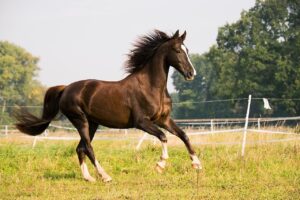Emily from McTimoney Animal Therapy is fully qualified and insured to take the best care of your horse. Here are the steps she will go through so you will know what to expect from your horses first treatment.
The stages of your horses first treatment
-
A full medical history will be taken and you’ll have a chance to discuss the problems you are having (if any) and check that Veterinary permission has been acquired.
-
Then an assessment will be performed, beginning by observing your animal from a distance looking for any irregular conformation, posture or signs of lameness.
-
A dynamic evaluation watching your horse move in walk, trot and possibly canter is next. Along with tight circles and rein back.
-
A horse may also then be either lunged or saddled and ridden for the practitioner to see if the horses back problem arises just when ridden. They will also see how the horse responds to the riders commands and whether it’s able to work properly in a good outline and evenly on each rein.
-
The tack will also be checked to make sure it is not the source of the problem.
-
The animal’s spine will be palpated before the treatment commences to isolate specific areas of discomfort and any skeletal asymmetries.
-
The McTimoney Chiropractic treatment is applied first. Animals usually react well to the adjustment and seem to enjoy it. They should experience little to no pain in the session but some animals can react to the speed and feel of some of the adjustments.
-
There will then be 20/30 minutes of equine sports massage, working specifically on problem areas to complement the McTimoney treatment.
What to expect over the next few days
-
If a horse needs exercising it can be done on the day before the treatment has been carried out as your horse will need to rest for a few days after to let the body adjust and heal.
-
You should notice an improvement in your horse, but occasionally this can take a few treatments to achieve.
-
After treatment your horse may feel sore and stiff but this is normal and it is their body adjusting to its new position. This shouldn’t last more than 24 hours.
-
Tiredness may also be observed and your animal may sleep more than normal for the next day or two.
-
Your horse may drink more than normal over the next few days.
-
It can also be an emotional event for the animal so it may not ‘be itself’ for a couple of days. Make sure your animal has plenty of water available as a treatment can cause dehydration.
It is important to remember that healing takes time and is a process. Miraculous results won’t be achieved immediately as the body must then have time to heal itself after an adjustment. Various numbers of treatment may be required according to the age of the animal, the nature of the back problem, and how long the animal has had the back problem. An animal may need anything between 2 and 10 adjustments, and should have 2 within a week of each other and then more gradually spaced out. An improvement is sometimes noticed immediately but it can also take several treatments or long lasting results. Ideally a maintenance program should be devised and an animal should receive a treatment every 3 to 6 months. Prevention is better than a cure and animals should continue to have treatments even if there are no outward signs of discomfort.
Aftercare will be given to you that are specifically tailored to suit your animal and this must be followed as much as possible as it will help your animal achieve the maximum benefit from the treatment.
You may also be shown some massage techniques, stretches and exercises
Book a McTimoney Equine Chiropractic Treatment
Areas covered in UK: Worcestershire and surrounding counties.
Book a McTimoney Equine Chiropractic Treatment or Call Emily Walters on 07983 565 438


